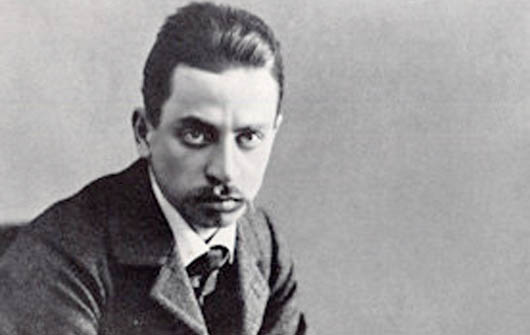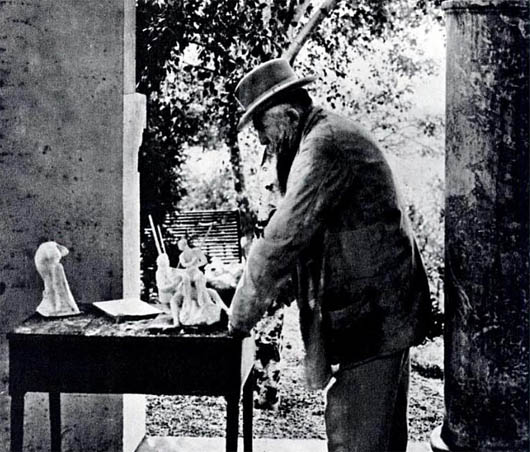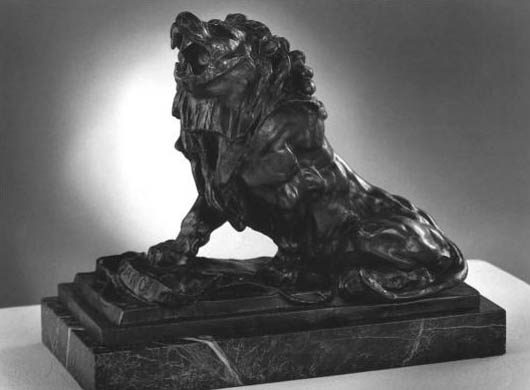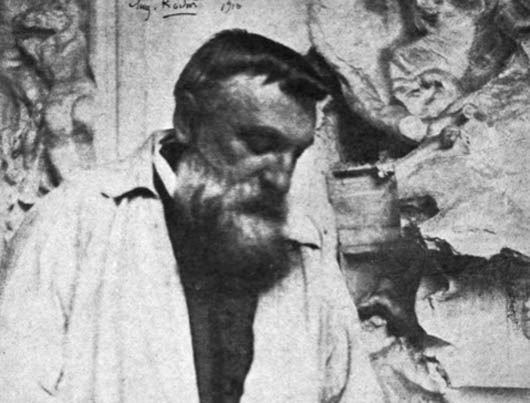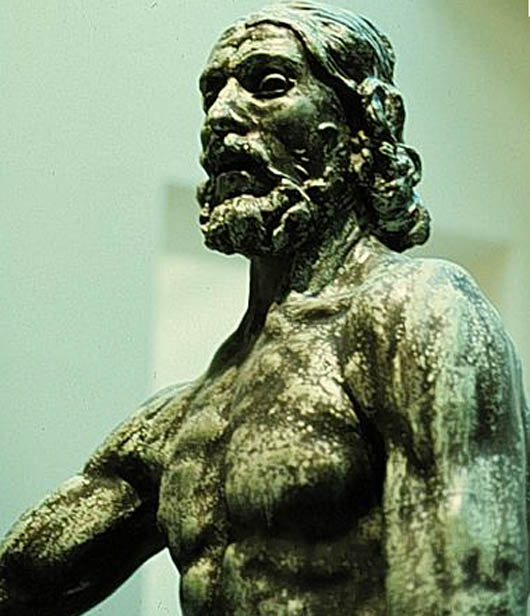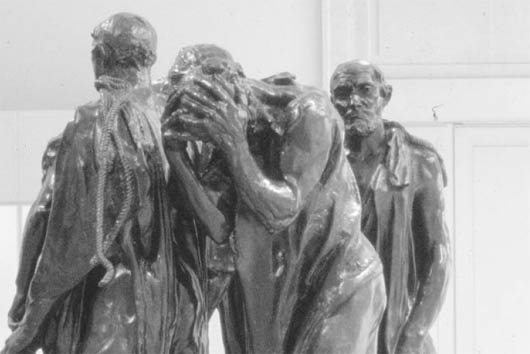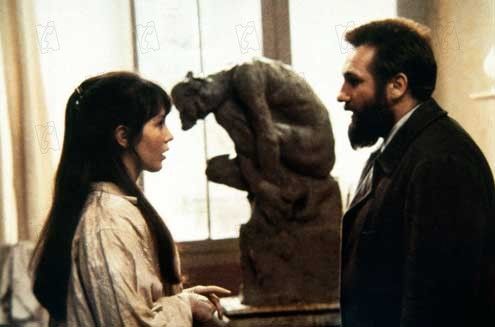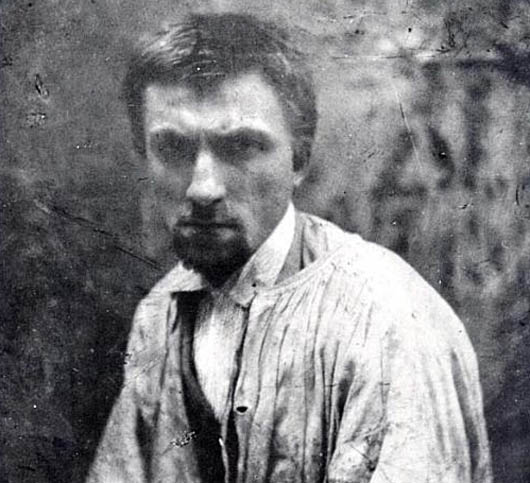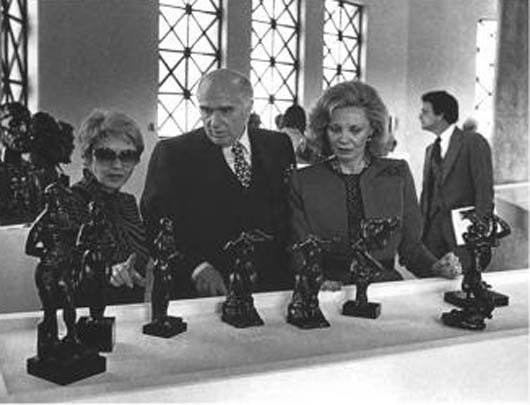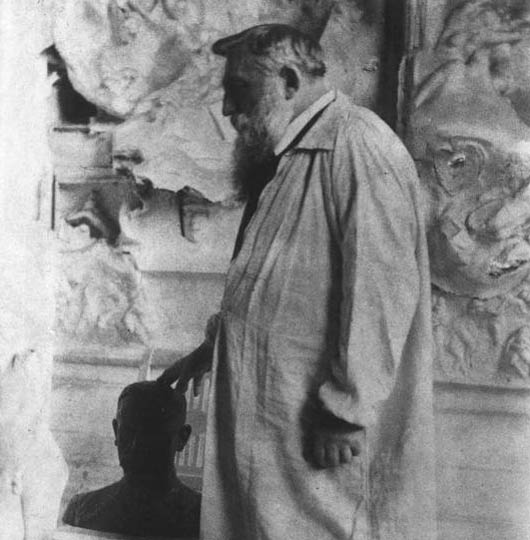 FICTION
FICTION In Which We Notice Something Odd About The Whole Scene
 Saturday, January 5, 2013 at 11:53AM
Saturday, January 5, 2013 at 11:53AM 
The Houseguest
by ISABELLA YEAGER
It wasn’t long after Ian died of an asthma attack that he started hanging around my apartment, asking me if I could check out books from the library for him and complaining that he was hungry and bored. It was fine at first but when he realized during the introduction to Swann’s Way that he couldn’t turn pages by himself I realized I’d taken on something I was maybe too busy to deal with at the time. We got him working on being more self-sufficient and he would sit in the windowsill in the evenings and do solidity exercises. Eventually though he began to have sneezing fits that he attributed to exposure to dust caught in sunrays between the hours of four and six p.m., so he started spending time before dinner lying under the bed in the dark.
I found out he was back when I woke up one night with what I thought was a bad case of dead hand. My arm was flung out over the edge of the bed and felt cold and numb and tingly. What I didn’t expect was that when I wiggled my fingers around to wake it up and blinked into the dark room I’d see Ian standing there, orblike eyes and a stomach full of my forearm. Later he said he’d positioned himself in a ray of moonlight so that I was more likely to see him.
“What the hell are you doing?” I asked. We both thought this was stupid. He asked me if I had any milk in the house. I reminded him that I was lactose intolerant and he said he was sorry to have forgotten. I said it was fine.
After he died Ian’s parents had moved to Minneapolis but no one had told him. He wasn’t sure whether he should write to them or call and even less sure that he was prepared to travel. I told him he could stay at my place for as long as he wanted and then it was just like old times for a while, since Ian had spent most of his time at my apartment in life and hadn’t been very social then either. He had always liked to read and was neat as a pin. These things were the same.

During the days after he’d relearned how to make a physical impression on the world around him, Ian worked on some experiments he was doing in physics and sent me to the library with a list of books on light and the cosmos that he wanted for his work. He didn’t really explain what he was aiming at but some nice things came of it. One of his favorite tricks was to spread his body thinly over the entirety of the kitchen window, which faced east and got great light in the morning, and make refractions on the wall opposite – colors I haven’t seen anywhere else. Another time I found him compressed neatly into a Ball jar with the lid sealed. We didn’t talk about it.
He took to gardening a few weeks into his stay and I picked up a copy of Audel’s Gardeners and Growers Guide to Beautiful Flowers – Successful Cultivation, Propagation. He noticed a week or so in that he had quite the green thumb and would stand for hours, sometimes overnight, with his fingers plunged into the soil of newly seeded pots. Within a day we’d observe life pushing up through the dirt, sometimes moving so quick we could see it happen, rushing up and out and curving hungrily towards Ian’s body. Since he had other projects to attend to, Ian worked to wean them off whatever they liked about him by standing with them in the sun until they leaned towards the windows instead.
We actually talked a lot about what was going on – not at first, but after Ian had stumbled on a collection of English ghost stories I’d carelessly left out. He said he’d been working on moving between gliding and walking at will around my bedroom and had tripped over the book because he was very focused. He fell against the radiator and waited for several days for a bruise to appear. None did and he was vocally disappointed.
He wanted to talk a lot all of a sudden about what it was like to be a ghost and in particular about the politics of horror writers trying to express things they hardly could have had personal experience with. He told me that one of the worst things about being a ghost that he’d noticed so far was an inconsistency with human beings’ concept of time – the hours I spent out of the house, he confessed, felt like days, sometimes weeks, to him, and he got pretty lonely. I asked him if this was why he was able to get so much done in what seemed like such short periods and he said he wasn’t sure but probably. He wrote furiously in a half-filled notepad he found in one of my drawers and asked to use. He was protective of his writing and sometimes tried to shield the page with his body when I’d come into the room. I’d look away to avoid reminding him of his transparency. Once though when he had taken a rare foray out onto the fire escape I snooped, fearing that all this research into dark subjects might cause his mental state to take some sinister turn.

It was mostly lists. Even more books he hoped to read, about the supernatural and spiritual; a string of activities he thought might be enjoyable to try around the house, involving food coloring, filling the bathroom with steam, and miming, to name a few. He had written down some things I figured were dreams, which answered a residual question of mine about whether what he was doing at night was anything like sleeping as I knew it, and in the back, a chart of things to watch out for. When he vanished once for two days, I searched this list frantically for clues, and finally positioned myself in the bathroom between the two mirrors in there that created one of those endless hallways of reflection. I waited for him and he finally came out, looking rough. He went straight into my bedroom and I took one of the mirrors off the wall and covered it with a towel.
Christmas was coming up and Ian figured out a way to make long-lasting bubble garlands out of his own spit. One night he put on Bing Crosby and strung these up around the doorframes. They looked really nice and I asked him to make a few more that I could send to my mother and sister as gifts. When my mother called later on to thank me for the weird present Ian picked up the phone by accident and after they had chatted for a few minutes passed it to me. He looked worried and when my mother asked who that had been on the other end she added, “and why did he sound so bizarre there right before he got off? It’s like he forgot how to talk.”
I didn’t see Ian for the rest of the night and the next day. I knew he was in my room but I kept busy and didn’t bother him. When he emerged he said he really needed to prioritize some things because he had a bad feeling. I didn’t really know what he meant – I figured things could either get no worse than being dead or drastically so in ways I couldn’t fathom but either way, that’s all he wanted to say on the subject and I didn’t push it.
Maybe the only time I was afraid of Ian was a few nights after the day he decided to reprioritize his time. I was sleeping and got hot and woke up thinking I’d go get some water and Ian had pulled a chair up to the bottom of my bed and was sitting there crying, I could hear him crying – only his face was longer than usual and there was just blackness where his eyes should have been. I heard him say that he couldn’t see anything and then he asked me if there was a problem with the pipes or the boiler in the basement or something, that there was a lot of clanging and loud noise while he was trying to sleep. I didn’t say anything to him and he stood up from the chair and was taller than I thought I remembered him being. He was sniffing loudly like a little kid but his eyes stayed black and too big and when he put his hands up to wipe them the hands sort of sunk into the blackness up to the wrists and didn’t come back out. I shut my eyes and lay there until I guess I went back to sleep. The next day he looked normal but wasn’t hungry and for the first time I noticed something jilting in his speech that reminded me of what my mother had said on the phone about him forgetting how to talk. I had to go out and left him with some hot tea, which he liked to smell, and sitting staring out the kitchen window into the sun. The spots where light passed through his body left the crystals, those indescribable colors, scattered all over the floor.
It was mid-January and he was curious about the snow so I scraped a bit up and brought it inside for him to do some experiments on. He melted the chunk of it pretty quick by passing through it happily several times, swallowing it and reaching into his stomach to pull it back out with his hand; but the feeling of the snow in his belly bothered him a lot and he put the rest of the snow into a cup and told me he couldn’t be around anything cold right now, that he hated the cold and that it had been a stupid idea. He wrapped himself in blankets and sat in the living room with his eyes shut. Later on he threw up on the floor like a cat and it looked like icicles and smelled tart. He tried to apologize but couldn’t seem to find the words and started to cry again so not knowing what else to do I brought him a book on fishing and also the copy of Flatland I was reading for a class and they seemed to soothe him.
In the last few weeks of his stay he needed to be by a heat source at all times. When the radiators weren’t enough I turned the oven on for him and he’d pull up a chair and sit by it for hours. I couldn’t be in there because it was so dry I’d get nosebleeds but he liked it. In the last week he complained of poor eyesight and that it was exhausting for him to turn pages and so I got him some books on tape, which he enjoyed a lot, among them Dante’s Purgatorio and Calvino’s Six Memos for the Next Millennium. They were both homemade tapes I’d found at the university, recorded by students maybe to make multitasking easier while cramming for exams, and then dropped off in a bin near the librarian’s office.
After a while Ian stopped listening to the Dante and just asked that I put Calvino’s chapter on visibility on repeat for him. He had grown to love the smell of lapsang souchang tea and I made a pot for him to sit near while he listened. He lost a lot of his vocabulary or rather, seemed unable to speak at all except to repeat things that I said, or that the tape said. I would hear him in the next room reciting the tapes word for word as they played.
“The link between the three worlds,” said the tape, and immediately after, Ian, “is the indefinable spoken of by Balzac: or, rather, I would call it the undecidable, the paradox of an infinite whole that contains other infinite wholes.”
And later,
“Still, all realities and fantasies can take on form only by means of writing, in which outwardness and innerness, the world and I, experience and fantasy, appear composed of the same verbal material.”
“…appear composed,” Ian echoed.

The last time I ever saw Ian was one afternoon when I came out of my bedroom to make dinner. I had left him in the kitchen by the oven and there he sat, writing. I was surprised mainly because he hadn’t done anything this industrious in weeks. He had just completed what seemed to be the first line of something but before I got a chance to comment I noticed something truly odd about the whole scene. Ian finished the line and in the time it took for me to blink he was starting the line over as though for the first time. The page seemed to clear and Ian’s movements exactly copied themselves once and then again. I can only describe it by saying he looked like that moment where Princess Leia gets projected out of R2-D2 and tells Obi Wan he’s her only hope, like forty times. He was even sort of flickering around the edges and when I went over by him it was like I got in the way of a light source that couldn’t pass through my body. He disappeared behind where I was standing and that was it, he was gone. I read what he’d been writing, picked up the paper and took it to my room. I tacked it up above my bed. It says,
“Fantasy is a place where it rains.”
Isabella Yeager is the senior contributor to This Recording. She is a writer living in Brooklyn. She twitters here and tumbls here. She last wrote in these pages about Rilke and Rodin.

 fiction,
fiction,  isabella yeager
isabella yeager 






























